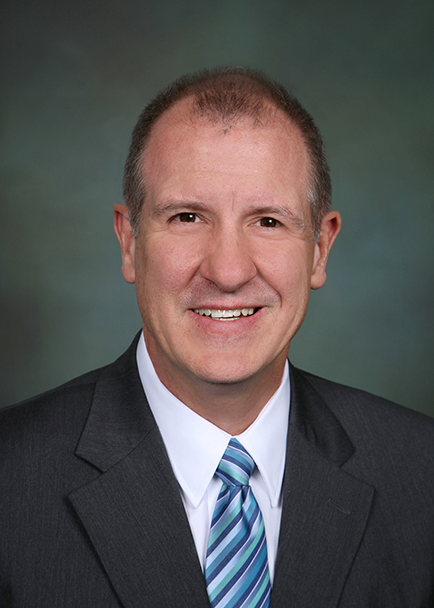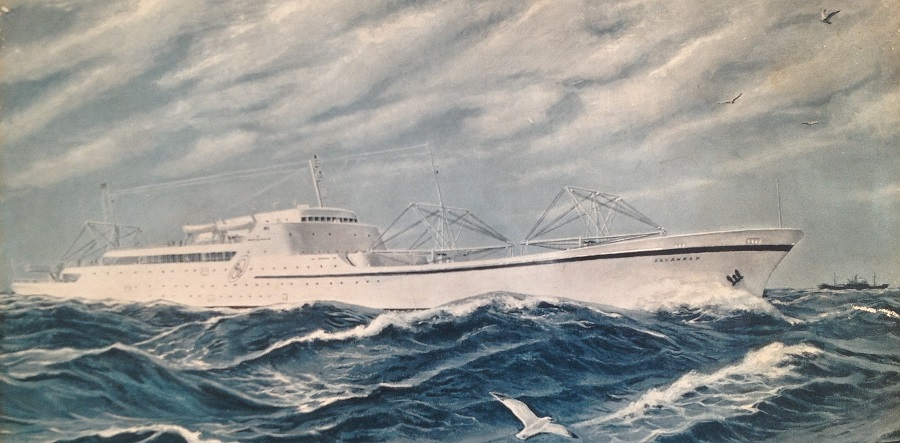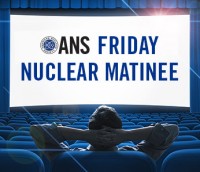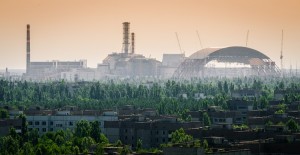Salvation by SMR: The Industry Gets Closer
by Will Davis, from the American Nuclear Society 2018 Annual Meeting in Philadelphia

by Will Davis, from the American Nuclear Society 2018 Annual Meeting in Philadelphia

ANS President Bob Coward
If you walked around the palatial Philadelphia venue of the 2018 American Nuclear Society Annual Meeting and bumped into outgoing ANS President Bob Coward or, for that matter, attended one of a number of sessions there, you might have heard him quote exactly, to the hour, how much time he had left as the ANS President. Not that he was eager to leave - in fact, it seemed as if Coward was marking how much time he had left to continue to make an impact.
I was intrigued this morning to read that StarCore Nuclear, a startup in Canada that's focusing on small, independent nuclear plants to provide a spectrum product (power, water, heat) had been - it is reported - in negotiation to provide an African nation with not less than twenty-three nuclear plants. This audacious plan at first brush sounds incredible, but it's in the details that the wisdom is found and, in fact, perhaps the model for Small Modular Reactors (SMR's) to really break through into the world's broader market for power.
According to the United Nations Environmental Program (UNEP), World Environment Day (WED) occurs on the 5th of June every year, and is the United Nation's principal vehicle for encouraging awareness and action for the protection of our environment.

Illustration of NS SAVANNAH from Launch Ceremony Brochure in Will Davis' collection.
Observers were startled to learn in March that the Omnibus Spending Bill had included, in the budget for the U.S. Maritime Administration, the complete estimated amount required to perform the nuclear decommissioning of America's only commercial nuclear powered vessel, the NS SAVANNAH. While there had been some funding toward beginning the process in a previous year's budget, the provision of the full amount - not specifically requested by MARAD - was a surprise.
Last week, I brought you the sordid tale of the Shoreham nuclear plant - a plant which was completed and started up, but which for a host of reasons was destined to never put power on the grid. The plant sits today as a shell - disabled in a nuclear sense (as the key components were removed) but visible as a reminder of the terrible political, managerial, historic, activist and regulatory confluence that killed it.
From June 17-21, the American Nuclear Society will be hosting its Annual Meeting. This year's event will be held in Philadelphia, Pa., where leaders from across the nuclear industry, government, and academia will share their expertise in hot-topic technical sessions and panel discussions.
https://vimeo.com/269002443
The story of the Shoreham Nuclear Power Plant on Long Island, New York was once well known in the industry and in utility circles; the plant, which took a very long time to construct and which faced considerable cost overrun, was heavily opposed by locals and in fact was never placed in operation. The specific details of the plant's long but non-operational history are, though, considerably more interesting and, in many ways both more revealing and more depressing than such a brief description implies.

Watch ANS Social Media Team member Douglas E. Hardtmayer talk about his hopes for the future of nuclear.
ANS member and Social Media Team member Douglas E. Hardtmayer is a nuclear engineer and host of the RadioNuclear podcast. Watch his TEDx talk as he discusses his hopes to change some of the most common misconceptions about nuclear energy and technology, and makes the case for it being a vital key in sustaining the future prosperity of mankind. Currently, Hardtmayer is a grad student studying nuclear engineering at The Ohio State University.
When was the marriage between radiation and medicine?
The Principles and Practice of Engineering (PE) exam may last for eight hours, but factoring in the time it takes to study, prepare, and apply for the exam, the level of effort grows substantially. Given that, why did I choose to take the nuclear PE exam?
The U.N. and many other governments believe that water scarcity will be one of the defining issues of the 21st century. We live in a world with an increasingly unpredictable climate with both droughts and floods becoming the norm. In much of the developed world we've built dams and tapped aquifers to quench our thirst. Many of the people lacking access to freshwater live in the Middle East and Africa, regions facing continued population growth that can only exacerbate the issue. We must look for new ways to bring water to both the developed and developing world.

Figure 1.) Chernobyl Nuclear Power Plant with the abandoned town of Pripyat in the foreground. The large arch structure is the New Safe Confinement structure under construction. Via Chernobylguide.com
Chernobyl was by far the worst nuclear power plant accident in history. The explosion and subsequent release of radioactivity forced the long-term evacuation of nearly 135,000 people from a 30-kilometer exclusion zone surrounding the plant [1]. When I was younger and wanted to learn more about nuclear power, I was fascinated with the Chernobyl disaster. This was partly because it was one of the only two books in my elementary school library on the topic, but also because it's constantly used as a cudgel to beat proponents of nuclear power into submission. However, when you look at the "facts" that opponents of nuclear power cite about the accident, they are often dead wrong.
 I truly think people more or less value the environment; they just choose to show it in different ways. Someone in the city might be willing to pay to maintain the Alaskan Arctic, and have no interest in ever going on a hike, let alone visiting the Arctic. Someone else may be dead set against environmental regulation but spend much of their time in beautiful undeveloped places; hiking, fishing, or hunting. No matter what people's personal feelings are towards the environment, we all are dependent on it and need to find ways to agree on how to use the natural resources available.
I truly think people more or less value the environment; they just choose to show it in different ways. Someone in the city might be willing to pay to maintain the Alaskan Arctic, and have no interest in ever going on a hike, let alone visiting the Arctic. Someone else may be dead set against environmental regulation but spend much of their time in beautiful undeveloped places; hiking, fishing, or hunting. No matter what people's personal feelings are towards the environment, we all are dependent on it and need to find ways to agree on how to use the natural resources available.
Note from the editor: Our Friday Nuclear Matinee is a day early this week. Please enjoy a short video from Generation Atomic.